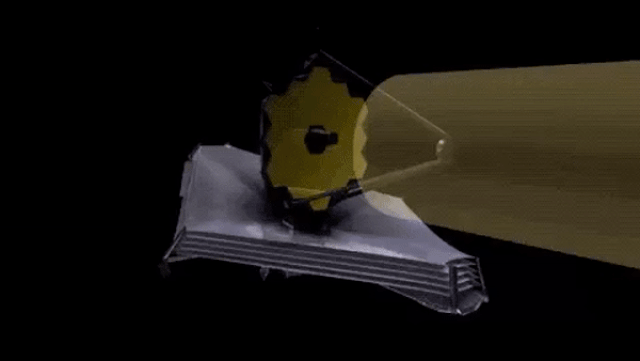James Webb Space Telescope instrument experiences glitch — but observatory remains in 'good health'
One of the telescope's imagers is under investigation, but don't get too worried.

There's good news and bad news about the James Webb Space Telescope.
The bad news is that one of the 'scope's instruments named the Mid-Infrared Instrument, or MIRI, has experienced a bit of an anomaly. But before you get too worried, the good news is that the James Webb Space Telescope (JWST) is still happy, healthy and heartily able to continue decoding the invisible universe for us.
Basically, in April, the JWST team announced that one of MIRI's four observing modes indicated a reduction in the amount of light registered by the instrument. However, after conducting an investigation into the issue, NASA said this change doesn't pose a risk to MIRI's science capabilities. "There is no risk to the instrument," NASA said in a blog post on Thursday (Aug. 24).
Related: James Webb Space Telescope confirms 'Maisie's galaxy' is one of the earliest ever seen
Although, the anomaly might have an impact on the amount of exposure time needed when the instrument switches to the particular mode that's been affected.
The mode at hand, called Medium-Resolution Spectroscopy (MRS), is calibrated to obtain infrared data coming from distant regions of the cosmos associated with wavelengths between 5 and 28.5 microns. That range, according to NASA, is where emission from molecules and dust are typically found, making MRS perfect for finding things like planet-forming disks. But, as NASA explains in the blog post, the reduced signal is specific for MIRI imaging at the longer wavelengths specifically.
One of MIRI's other modes, called Low-Resolution Spectrography that specializes in wavelengths between 5 and 12 microns normally connected to object surfaces (like planets), is operating normally, the team says. A fourth MIRI mode, called Coronagraphic Imaging, is currently under investigation. That mode is programmed to directly detect exoplanets and dust disks around host stars through a mechanism known as coronagraphy, which relies on blocking light from one source to gather data about surrounding sources.
Get the Space.com Newsletter
Breaking space news, the latest updates on rocket launches, skywatching events and more!
The JWST team also confirmed that the observatory is generally in "good health," and that "each of Webb's other scientific instruments remain unaffected." Those instruments include its Near-Infrared Camera (NIRCam), Near-Infrared Spectrograph (NIRSpec), Near-Infrared Imager and Slitless Spectrograph (NIRISS) and Fine Guidance Sensor (FGS).
Join our Space Forums to keep talking space on the latest missions, night sky and more! And if you have a news tip, correction or comment, let us know at: community@space.com.

Monisha Ravisetti is Space.com's Astronomy Editor. She covers black holes, star explosions, gravitational waves, exoplanet discoveries and other enigmas hidden across the fabric of space and time. Previously, she was a science writer at CNET, and before that, reported for The Academic Times. Prior to becoming a writer, she was an immunology researcher at Weill Cornell Medical Center in New York. She graduated from New York University in 2018 with a B.A. in philosophy, physics and chemistry. She spends too much time playing online chess. Her favorite planet is Earth.
-
katanaguy Still, this is concerning....I do not know why the JWST will end in approx 10 yrs+....they could have given it more fuel...& don't tell me about gravity & weight stuff.Reply
Space is so dangerous...just a collage of dust chips....could really kill JWST....Let's hope not. One thing it will prove...life is not so common as we once thought....it is a special gift of science & spirit, working together, I believe.....intelligent life will prove even much more rare than we thought as well. Do you realize what all has got to come together just in the right amounts & just at the right time for intelligent life to begin?.....I think the odds against intelligent life developing in the universe are much more incredibly higher than we think now.....2nd question is.....once developed.....how long before it ends??
